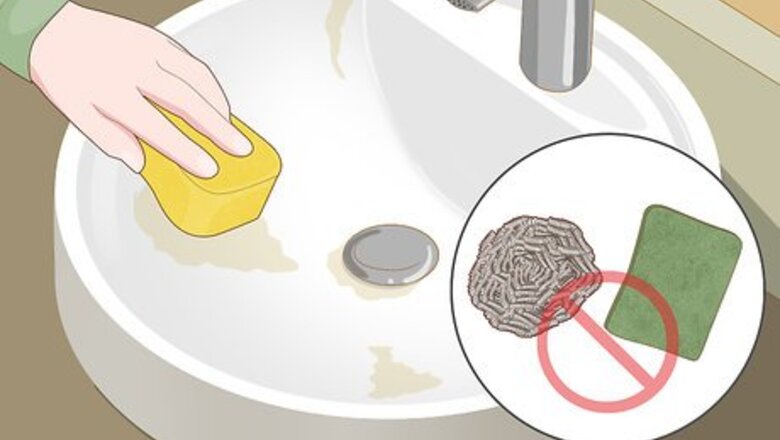
views
Cleaning Porcelain Sinks
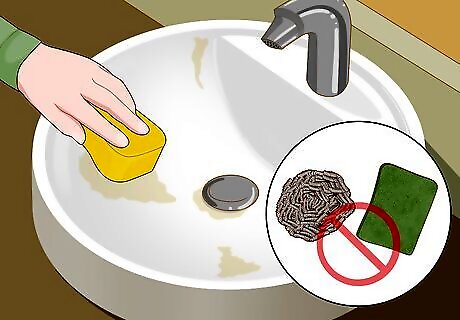
Start with a gentle sponge and dish soap. Porcelain can pick up small scratches easily, so avoid using scouring pads or steel wool. For surface stains, simply start with a clean sponge and some grease-cutting dish soap. Wipe in circular motions, then rinse the soap away with a clean sponge or rag. Use the hottest water you can stand for the best results.
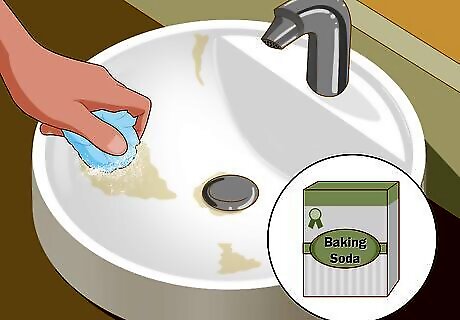
Wipe the sink down with baking soda. Use a damp cloth or sponge and coat the stained portions of the sink with baking soda. Baking soda is a mild abrasive, so it will pick up stains without scratching your sink. Scrub it on in a circular motion, then be sure to rinse it all off -- it will leave a residue if left to dry on the sink. Mix some ammonia or lemon juice in for further stain-fighting power.
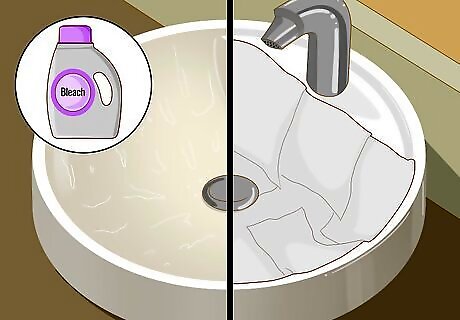
Coat your sink with bleach, then cover it with paper towels overnight. The paper towels will keep the bleach close to the sink, allowing it to soak into the stains. The next morning, remove the towels. Rinse and wipe the sink for an easy, hassle-free clean. Make sure you do this in a well-ventilated area (or open a window) to prevent inhaling bleach fumes. Never do this on colored porcelain or antiques, as it can damage the color or any wood or metal fixtures attached to the porcelain.
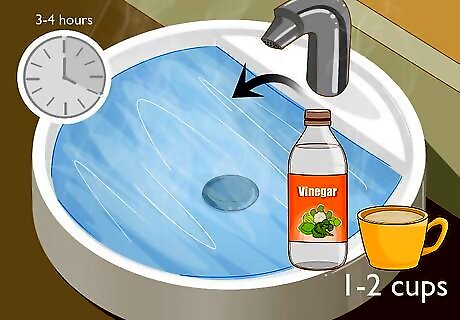
Use vinegar to remove watermarks. Close the drain of the sink and fill it with hot water. Then add 1-2 cups of vinegar and let it sit for 3-4 hours. Once you've drained the water, any water stains will be gone or easily wiped away with a sponge. Rinse the vinegar out when you are done. It is acidic, which can damage the finish if you aren't careful.
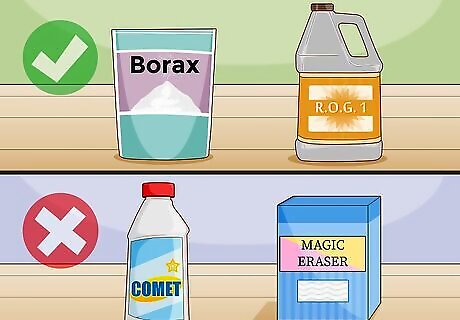
Try other specific, non-abrasive cleaners. Products like Borax and ROG 1 can be used to remove tough stains, but you should know that not all cleaners are made the same. You want to avoid any abrasive cleaners (like Comet) and any acidic cleaners (Magic Eraser), as they can dull the polish on your porcelain sink.
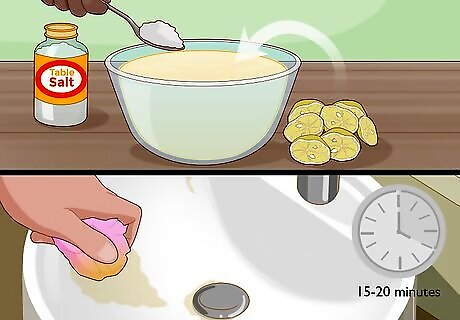
Use lemon juice and table salt to get rid of rust stains. This should only be a last resort, as the abrasion and acid can dull the finish over time. However, for serious stains you should apply a little salt, then squeeze some lemon juice over the stain. Then lightly scrub the mixture with a sponge. You can let it sit for 15-20 minutes as well to get rid of really nasty stains.
Shining and Polishing Porcelain
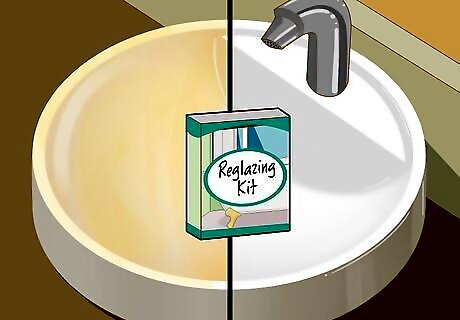
Purchase a re-glazing kit. Porcelain re-glazing is easily done at home, and is a great way to get the shine back in your sink with minimal effort. To use it, get the sink as clean as you can. Then rinse it and apply the glazing agent with a clean rag, lightly coating the entire sink. Follow the instructions provided with the glaze before using the sink again. Porcelain polish is sometimes sold as tile polishing and made for porcelain tiles.
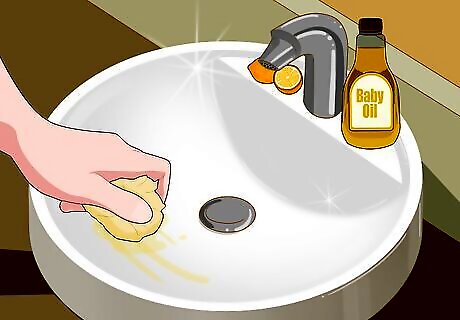
Use some lemon or baby oil to make your sink shine. Simply apply a few drops of oil to a clean rag and use it coat the sink. This will prevent stains from sticking to it as easily and make the sink smell great at all times.
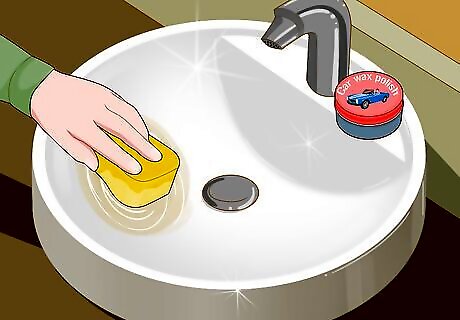
Try using car wax to polish your sink and prevent scratches. You won't need much. Simply apply a little bit on a clean sponge and use it to coat the bowl of the sink. It will keep it clean and smelling great.
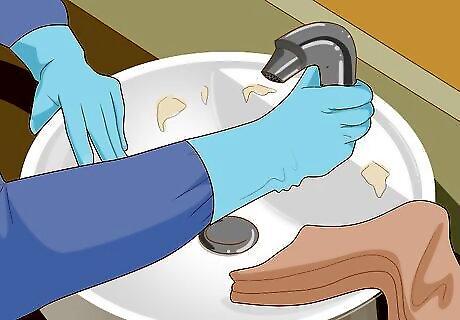
Consider getting the porcelain re-glazed by a professional. Porcelain sinks are made by bonding porcelain to a cast-iron fixture, and they are incredibly durable when finished. As such, it is often worth the money to get a severely scratched or stained sink resurfaced, as this will protect it for many more years to come.


















Comments
0 comment